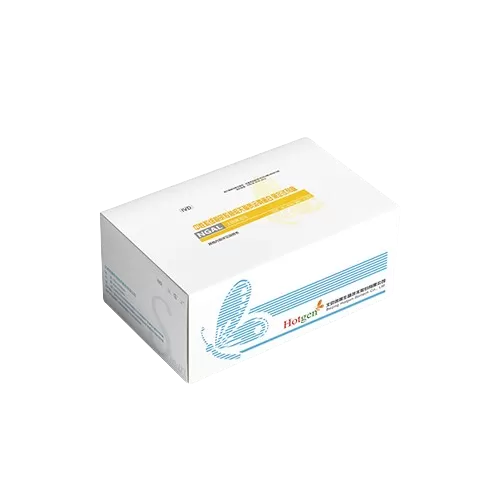Chemiluminescence Immunoassay (CLIA) technology began in the early 1980s and developed rapidly in the 1990s, becoming a new immunoassay technology following radioimmunoassay, enzyme-linked immunoassay, and fluorescent immunoassay. Immunodiagnostics is the largest segment within in vitro diagnostics, with chemiluminescence being the most advanced and definitive path in immunodiagnostics. In vitro diagnostics, which are currently the most common technical means of diagnosing, preventing, and treating human diseases, can be divided into immunodiagnostics, molecular diagnostics, biochemical diagnostics, blood glucose monitoring, and laboratory diagnostics according to the different technologies used clinically. Among these, immunodignostics accounts for nearly 40% of the entire IVD market.
The Principle of CLIA
CLIA technology is a quantitative analysis technique that utilizes the free energy released by chemical reactions to excite intermediates, causing them to return from an excited state to the ground state and measure the isoenergetic electrons released during this process. CLIA analyser features high sensitivity, strong specificity, good reagent stability and long shelf life, a wide detection range, simple operation, numerous detection items, and a high degree of automation. It is widely used in various fields of clinical testing.
The Advantages of CLIA
High Sensitivity
High sensitivity is a key advantage of CLIA analyser. Theoretically, the highest sensitivity of chemiluminescence can reach 10-18 Mol/L (RIA is 10 -12 mol/L). Chemiluminescence immunoassay can detect substances that radioimmunoassay and enzyme-linked immunoassay cannot, which is of great significance for the early diagnosis of diseases.
Wide Linear Dynamic Range
The luminescence intensity within 4 to 6 orders of magnitude shows a linear relationship with the concentration of the measured substance. This provides a significant advantage compared to the colorimetric enzyme immunoassay with an optical density (OD value) of a range of only 2.0. Although RIA also has a wide linear dynamic range, its application is limited by radioactivity constraints.
Long Duration of Light Signal
The light signal produced by the glow-type CLIA can last several hours or even a whole day, simplifying the experimental operation and measurement.
Simple and Fast Analysis Method
Most analysis detections only require the addition of one reagent (or composite reagent) in a one-step mode.
Stable Results with Small Errors
The sample emits light directly without any need for a light source, eliminating various potential influences (such as light source stability, light scattering, light wavelength selectors, etc.) on the analysis, making the results sensitive, stable, and reliable.
Good Safety and Long Usage Period
Eliminates the use of radioactive substances. So far, no harm has been found; the reagents are stable and can be stored for up to a year.
Due to its advantages in sensitivity, speed, and automation, CLIA machine plays a key role in promoting the development of the detection of ultra-micro active substances in clinical diagnosis and prognosis. Nowadays, as a rapidly growing technology in the immunology market, CLIA has become one of the most important members of in vitro diagnostic (IVD) medical devices.
The Future Prospects of CLIA
CLIA technology has been widely applied in different fields, including environmental monitoring, liquid chromatography, clinical diagnosis, food safety, drug analysis, immunoassay, and gene probe detection. Today, CLIA analyser represents an efficient and versatile medical analytical tool suitable for a wide range of applications because it combines the high selectivity of luminescent signals with the possibility of locating and quantifying luminescence within samples.
The high detection capability and rapidity of CLIA technology make it possible to develop high-throughput detection, wherein multiple analytes can be detected in multiple samples simultaneously. Hence, more and more medical experts and chemists are becoming interested in CLIA. However, the development of CLIA depends on the application of sensitive and selective chemiluminescent probes. Enhancing analytical sensitivity might lead to the discovery of new analytes for tumor detection. Technological advances make it hopeful to use nanoparticles as labels and CLIA detection to trace extremely low concentrations in serum.
Due to the rapid development of new technologies, enterprises of CLIA analysers should remain vigilant and keep pace with current trends, or they will face the risk of being phased out. Moreover, the development of new technologies such as 5G, business intelligence, and cloud computing will create more favorable conditions and environments for the advancement of chemiluminescence immunoassay instruments.
Recently, Beijing Hotgen Biotech Co., Ltd. added 29 diagnostic products to its CE certification under the EU In Vitro Diagnostic Medical Devices Regulation (IVDR). The CE IVDR certificate was issued by the British Standards Institution (BSI), one of the most prestigious certification bodies in Europe. The newly approved 29 diagnostic reagents cover the full range of Hotgen's immunoassay products, including chemiluminescence, up-conversion luminescence, colloidal gold, and enzyme-linked immunoassay B and C class reagents. This achievement enriches the company's product solutions in the international business sector, further enhancing its overall market competitiveness, and providing a strong lever for accelerating international market expansion.
 English
English français
français Deutsch
Deutsch Español
Español ไทย
ไทย русский
русский português
português العربية
العربية Indonesia
Indonesia







